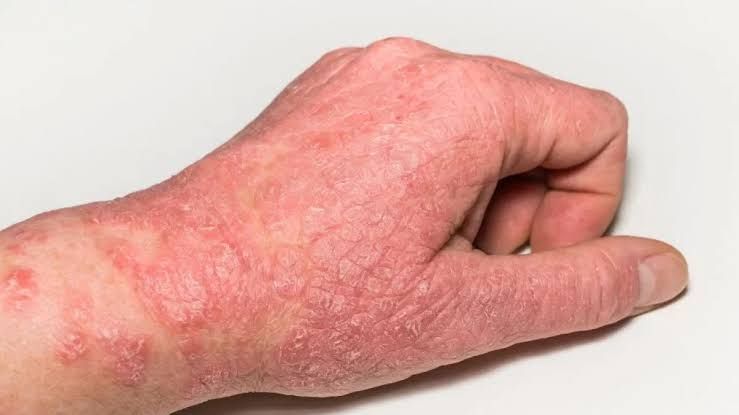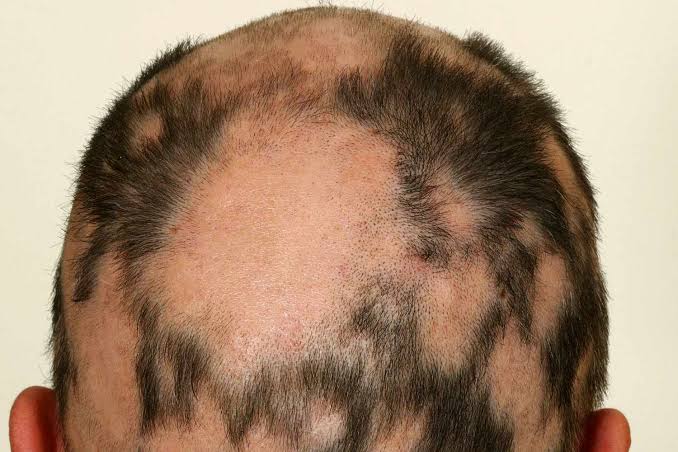
Common Types of Eczema and Their Clinical Presentations
Eczema, also known as dermatitis, is a group of conditions that cause the skin to become inflamed or irritated. There are several common types of eczema, each with distinct clinical presentations. Below is a detailed overview of the most prevalent types:
1. Atopic Dermatitis (Atopic Eczema)
Atopic dermatitis is one of the most common forms of eczema, often beginning in childhood but can persist into adulthood. It is characterized by dry, itchy skin and can be associated with other atopic disorders such as asthma and hay fever.
- Clinical Presentation: The skin typically appears red and inflamed, with areas that may be scaly or crusted. Common locations include the flexural areas (inside elbows and behind knees), face, neck, and wrists. In infants, it often presents on the cheeks and scalp. Scratching can lead to lichenification (thickened skin) over time.
2. Discoid Eczema (Nummular Eczema)
Discoid eczema manifests as round or oval patches on the skin that can be very itchy.
- Clinical Presentation: The lesions are coin-shaped (nummular) and can vary in size from a few millimeters to several centimeters. They typically appear on the arms and legs but can occur anywhere on the body. The affected areas may be red, scaly, and sometimes weepy or crusted.
3. Allergic Contact Dermatitis
This type occurs when the skin reacts to a specific allergen after direct contact.
- Clinical Presentation: Symptoms include redness, swelling, itching, and blistering at the site of contact with the allergen. The rash usually develops within 24-48 hours after exposure and may spread beyond the initial contact area due to scratching or spreading allergens.
4. Irritant Contact Dermatitis
Unlike allergic contact dermatitis, irritant contact dermatitis results from direct damage to the skin by an irritant substance rather than an allergic reaction.
- Clinical Presentation: This condition typically presents as red, dry patches that may crack or peel. Symptoms include burning or stinging sensations rather than itching. Common irritants include soaps, detergents, solvents, and prolonged exposure to water.
5. Pompholyx (Dyshidrotic Eczema)
Pompholyx is characterized by small blisters on the palms of the hands and soles of the feet.
- Clinical Presentation: The blisters are often intensely itchy and may be filled with clear fluid. After they burst, they can lead to scaling or cracking of the skin in these areas. Episodes may recur periodically.
6. Seborrhoeic Eczema (Seborrheic Dermatitis)
Seborrhoeic eczema primarily affects oily areas of the body such as the scalp, face, and upper back.
- Clinical Presentation: It presents as red patches covered with greasy yellowish scales or crusts. In infants, it is commonly referred to as cradle cap when it occurs on the scalp. Adults may experience dandruff-like flaking along with redness in facial creases like around the nose or eyebrows.
In summary, while all these types share some common features such as inflammation and itchiness, their clinical presentations differ significantly based on location on the body, appearance of lesions, triggers involved (allergic vs irritant), and patient demographics.
Major Complications Related to Various Forms of Eczema
Below is a detailed examination of the major complications associated with atopic eczema, discoid eczema, allergic contact dermatitis, irritant contact dermatitis, pompholyx (dyshidrotic eczema), and seborrhoeic eczema.
Atopic Eczema
Atopic eczema is a chronic inflammatory skin condition often associated with other atopic disorders such as asthma and hay fever. Major complications include:
- Secondary Infections: The compromised skin barrier in atopic eczema can lead to bacterial infections (e.g., Staphylococcus aureus), viral infections (e.g., herpes simplex virus), and fungal infections.
- Skin Thickening (Lichenification): Chronic scratching can cause the skin to thicken and become leathery.
- Psychosocial Impact: The visible nature of the condition can lead to anxiety, depression, and social withdrawal.
- Sleep Disturbances: Itching often disrupts sleep patterns, leading to fatigue and decreased quality of life.
Discoid Eczema
Discoid eczema presents as circular patches on the skin and can lead to several complications:
- Infection: Similar to atopic eczema, discoid eczema can become infected due to scratching or broken skin.
- Scarring: Persistent lesions may result in scarring or changes in pigmentation after healing.
- Chronicity: Discoid eczema can be recurrent or chronic, leading to prolonged discomfort and management challenges.
Allergic Contact Dermatitis
This form occurs when the skin reacts to allergens after sensitization. Complications include:
- Persistent Dermatitis: Continued exposure to allergens can cause ongoing inflammation and discomfort.
- Secondary Infections: Open lesions from scratching may become infected.
- Systemic Reactions: In rare cases, severe allergic reactions may occur if allergens enter the bloodstream.
Irritant Contact Dermatitis
Irritant contact dermatitis results from direct damage to the skin by irritants rather than an immune response. Complications include:
- Chronic Skin Changes: Prolonged exposure can lead to thickened skin or fissures that are painful and prone to infection.
- Psychological Effects: The discomfort and visibility of symptoms may affect mental health.
- Increased Sensitivity: Repeated irritation may increase sensitivity of the skin over time.
Pompholyx (Dyshidrotic Eczema)
Pompholyx is characterized by small blisters on the hands and feet. Its complications include:
- Bacterial Infection: Blisters can rupture, leading to bacterial infections such as cellulitis.
- Chronic Recurrence: This type of eczema often recurs, causing ongoing distress and management issues.
- Nail Changes: Chronic cases may lead to nail dystrophy or changes in nail texture.
Seborrhoeic Eczema
Seborrhoeic eczema primarily affects oily areas of the body like the scalp and face. Complications include:
- Secondary Infections: Similar risk for bacterial or fungal infections due to compromised skin integrity.
- Hair Loss (Alopecia): Severe cases affecting the scalp may lead to temporary hair loss due to inflammation.
- Psychosocial Issues: Visible lesions on the face or scalp can impact self-esteem and social interactions.
In summary, while each form of eczema has unique characteristics, they share common complications such as secondary infections, psychosocial impacts, chronicity issues, and potential for scarring or changes in pigmentation.
Principles of Management of Various Forms of Eczema
The management principles can vary based on the type of eczema. Below is a detailed overview of the management strategies for different forms of eczema: atopic, discoid, allergic contact, irritant contact, pompholyx (dyshidrotic), and seborrhoeic eczema.
1. Atopic Eczema (Atopic Dermatitis)
Atopic eczema is a chronic condition often associated with other atopic diseases such as asthma and hay fever.
- Moisturizers: Regular application of emollients to maintain skin hydration is crucial. Products should be fragrance-free and suitable for sensitive skin.
- Topical Corticosteroids: These are used to reduce inflammation during flare-ups. The potency should be chosen based on the severity and location of the eczema.
- Calcineurin Inhibitors: Medications like tacrolimus or pimecrolimus can be used as alternatives to steroids for sensitive areas (e.g., face).
- Antihistamines: Oral antihistamines may help alleviate itching and improve sleep.
- Phototherapy: Ultraviolet light therapy may be beneficial for moderate to severe cases not responding to topical treatments.
- Systemic Treatments: In severe cases, systemic immunosuppressants or biologics like dupilumab may be considered.
2. Discoid Eczema (Nummular Dermatitis)
Discoid eczema presents as coin-shaped patches on the skin.
- Moisturizers: Similar to atopic eczema, maintaining skin hydration is essential.
- Topical Corticosteroids: High-potency steroids are often required due to the inflammatory nature of this condition.
- Antibiotics: If secondary bacterial infection occurs in lesions, topical or oral antibiotics may be necessary.
- Avoiding Triggers: Identifying and avoiding irritants or allergens that exacerbate the condition is important.
3. Allergic Contact Dermatitis
This form results from an allergic reaction to substances that come into contact with the skin.
- Avoidance of Allergen: Identifying and avoiding the specific allergen is critical in managing this type.
- Topical Corticosteroids: Used to reduce inflammation and itchiness during flare-ups.
- Oral Corticosteroids: In severe cases or widespread reactions, short courses may be prescribed.
- Patch Testing: This can help identify specific allergens responsible for the dermatitis.
4. Irritant Contact Dermatitis
This occurs when the skin comes into direct contact with irritating substances.
- Avoidance of Irritants: Identifying irritants (e.g., soaps, detergents) and minimizing exposure is key.
- Barrier Creams: Use protective creams before exposure to irritants can help prevent outbreaks.
- Topical Corticosteroids: To manage inflammation during flare-ups.
5. Pompholyx (Dyshidrotic Eczema)
Pompholyx is characterized by small blisters on the hands and feet.
- Moisturizers: Keeping affected areas well-moisturized helps prevent dryness that can trigger flares.
- Topical Corticosteroids: High-potency steroids are often effective in reducing inflammation during acute episodes.
- Cold Compresses: Applying cold compresses can relieve itching and discomfort during flare-ups.
- Systemic Treatments: In persistent cases, systemic corticosteroids or immunosuppressive agents may be necessary.
6. Seborrhoeic Eczema (Seborrheic Dermatitis)
This type commonly affects oily areas such as the scalp and face.
- Medicated Shampoos: Use shampoos containing ketoconazole, selenium sulfide, or zinc pyrithione for scalp involvement.
- Topical Antifungals/Corticosteroids: For facial involvement or other areas; antifungal creams can help reduce yeast overgrowth contributing to symptoms.
- Moisturizers: Regular use helps manage dryness associated with seborrheic dermatitis.
In conclusion, while there are common principles across various forms of eczema management—such as moisturizing and using anti-inflammatory treatments—the specifics depend on identifying triggers and tailoring treatment accordingly for each type.







